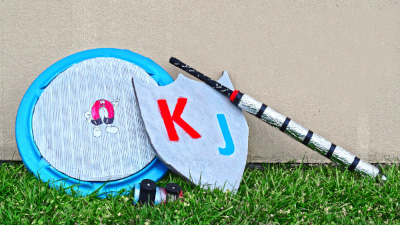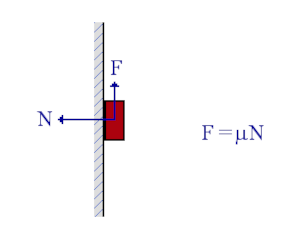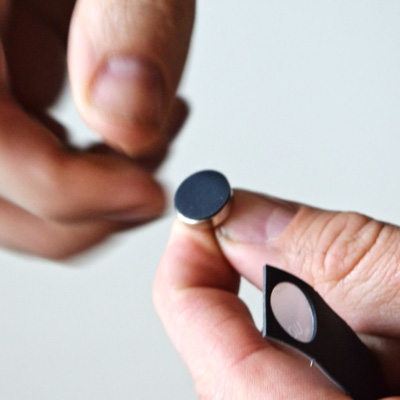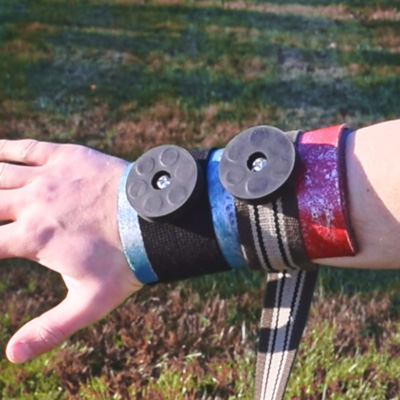Cosplay with Magnets
Using strong neodymium magnets for cosplay and props
Have you ever wondered how Captain America's shield magically returns back to his arm? Or how a sword can be held perfectly in place on someone's back until they're ready for battle? One word...CG...I mean magnets! This month, we'll explore how you can use magnets to make a costume or prop come to life.
Prototypes

We made 3 prototype props to do some testing with, two shields and a sword. To keep it DIY, we made one shield out of an old trashcan lid and some foam, another out of thin particle board and foam, and the sword out of a pool noodle and some wood.
It's important to know the weight of the prop you're wanting to hold in place. You'll also need to consider how the magnet will be holding the prop...will it attract to a piece of steel, or another magnet? Will it be holding the piece vertically or horizontally?
In all of our prototypes, we used magnets attracting to a piece of thin piece of steel. This allows for some flexibility, as magnets will attract anywhere on the steel. Magnet to magnet attraction is typically stronger in applications like this, but the alignment has to be precise, as magnets won't attract well if they are off-center. Check out the video below for a quick building montage, as well as some tips & tricks for what magnets to use.
Magnets used in the video:
- 3 lb shield: A single RMD-B-X8 or RMD-B-Y0 works well
- 5 lb shield: Two RMD-B-X8 or RMD-B-Y0
- Sword: A RY0X04 placed over the handle
Review of magnetic force
As is the case in many applications, we want to find the "Goldilocks" zone - the magnets need to be strong enough to hold the props in place while moving, yet weak enough to remove without a ton of effort. This is tricky in applications where you want to hold weight vertically.
In vertical holding applications, we need to take the shear/sliding force into account. The shear force is always less than the magnet's pull force. How much so depends on the friction between the magnet(s) and what the magnet is attracting to. Let's look at a quick review of shear force, from our How Much Will a Magnet Hold? article.
Loading in shear - Friction

Magnets don't pull with any lateral force when stuck to a steel plate. The magnetic force pulls the magnet straight towards the steel plate. As gravity tries to pull the magnet down, the friction between the magnet and the steel prevents it from sliding.
Only this friction force keeps the magnet from sliding down the face of the steel.
Why don't we publish numbers for this? Because the friction coefficient varies greatly depending on the two materials and any lubrication that might be there. The paint on your refrigerator might be different than mine. Or perhaps my fingerprints are greasier -- small changes can make a big difference! From the Wikipedia article on Coefficient of Friction:
The coefficient of friction is an empirical measurement â€" it has to be measured experimentally, and cannot be found through calculations.
Check out this reference for a list of friction coefficients for a number of various materials. Note the disclaimers all over it -- you really have to try it out in your specific application. Being cautiously pessimistic, try starting out with an assumption of 0.1 - 0.25 for your coefficient of friction. That is, you might only get 10% - 25% of the listed pull force when loaded this way.
What does this mean for costumes and cosplayers? If you need to hold a 5 lb prop vertically, you'd need a nickel plated magnet with a pull force of at least 20 lb to hold it up...which might make it difficult to pull straight off when you want to remove the prop from the magnet.
If you use a thin rubber material, or one of our bumper pads, the shear force increases substantially, to something more like 75% of the pull force. This means that for a 5 lb object, you'd need a rubber coated magnet, or magnet with rubber material, with a pull force of 7 lb to hold it vertically. This is a much more workable pull force.

If using two nickel plated magnets, rather than magnet to steel, we generally say that it takes 50% of the pull force to slide two magnets apart sideways. For a 5 lb object, the magnets would need to have a pull force of at least 10 lb.
Leverage is also something to keep in mind. All of our props were relatively thin, close to the magnet and steel connection. If the prop sticks out far from the magnet(s), it would put leverage on the connection, and you'd need a much stronger magnet to overcome it. See our Leverage & Friction article for more information on this.

If you don't want your prop to rotate easily, consider using two magnets side by side, rather than just one. A single magnet on our larger shield held it in place, but the shield rotated easily, which we didn't want.
Magnets as closures
Our Sewing Magnets are a great alternative to buttons or Velcro for costumes. Using magnets would allow you to quickly put on, or tear away, a costume, cape, or other garb. Our Sewing Magnets article has some good information about these.
We hope this article helps you narrow down the options for your project. If you still aren't sure, email us and we'll be happy to help!


